Kenia |
|
|
|
| Übersicht – Contents: | |
Kenia |
|
|
|
| Übersicht – Contents: | |
Flaggen – Flags: |
|
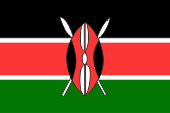 |
National- und Handelsflagge – national and merchant flag, Seitenverhältnis – ratio = 2:3, Quelle/Source: Corel Draw 4   |
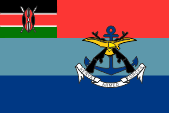 |
Flagge der Verteidigungskräfte – flag of the Kenya Defense Forces, Seitenverhältnis – ratio = 2:3, Quelle/Source: Wikipedia (EN) |
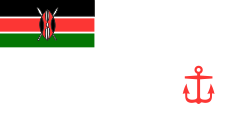 |
Marineflagge – naval flag, Seitenverhältnis – ratio = 1:2, Quelle/Source, nach/by: Flags of the World |
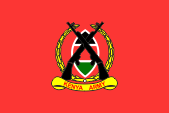 |
Flagge des Heeres – flag of the Army, Seitenverhältnis – ratio = 2:3, Quelle/Source, nach/by: Flags of the World |
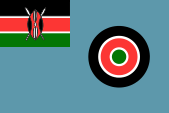 |
Flagge der Luftwaffe – flag of the Air Force, Seitenverhältnis – ratio = 2:3, Quelle/Source, nach/by: Wikipedia (EN) |
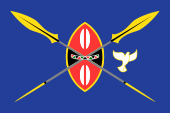 |
2013–2022, Präsidentenflagge – flag of the president, Uhuru Kenyatta, Seitenverhältnis – ratio = 2:3, Quelle/Source: Tcfc2349, CC BY-SA 4.0, via Wikimedia Commons |
historische Flaggen – historical Flags: |
|
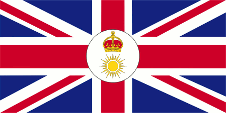 |
1890–1895, British East Africa, Flagge der Britischen Ostafrika-Kompanie – flag of the British East Africa Company, Seitenverhältnis – ratio = 1:2, Quelle/Source, nach/by: Flags of the World |
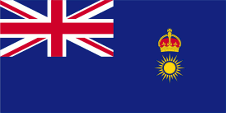 |
1895–1921, British East Africa, |
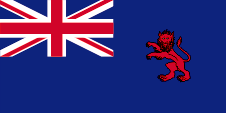 |
1921–1963, Flagge der Regierung (Staatsflagge) – flag of the government (state flag), Seitenverhältnis – ratio = 1:2, Quelle/Source, nach/by: Wikipedia (EN) |
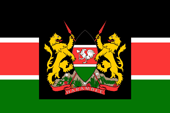 |
1963–1970, Präsidentenflagge – flag of the president, Seitenverhältnis – ratio = 2:3, Quelle/Source, nach by: Wikipedia (EN) |
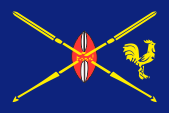 |
1970–1978, Präsidentenflagge – flag of the president, Jomo Kenyatta, Seitenverhältnis – ratio = 2:3, Quelle/Source, nach by: Flags of the World |
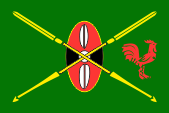 |
1978–2002, Präsidentenflagge – flag of the president, Daniel Arap Moi, Seitenverhältnis – ratio = 2:3, Quelle/Source, nach/by: Flags of the World |
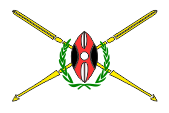 |
2002–2013, Präsidentenflagge – flag of the president, Mwai Kibaki, Seitenverhältnis – ratio = 2:3, Quelle/Source, nach/by: Flags of the World |
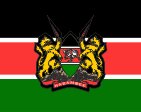 |
Präsidentenstandarte – presidential colour, präsentiert beim Militär das Staatsoberhaupt als obersten Befehlshaber - presents in the military the Head of State as supreme Commander Seitenverhältnis – ratio = 4:5, Quelle/Source, nach/by: Flags of the World |
Bedeutung/Ursprung der Flagge – Meaning/Origin of the Flag: |
|
| Die Flagge wurde am 12.12.1963 anlässlich der Unabhängigkeit offiziell gehisst, und ist aus der Flagge der KANU-Partei hervorgegangen. Sie zeigt drei waagerechte Bahnen in Schwarz, Rot und Grün, die jeweils durch einen dünnen weißen Streifen getrennt werden. In der Mitte zeigt die Flagge einen Massai-Schild und zwei gekreuzte Speere als Symbol für den Willen, die Freiheit auch mit der Waffe zu verteidigen. Schild und Speere erinnern an den Ausspruch von Jomo Kenyatta (Staatsoberhaupt von 1964-1978) "unsere Ahnen, die mit diesen Waffen unser Land bewachten". Schwarz steht für den Kampf um die Freiheit, Rot für das dafür vergossene Blut, Grün für die Vegetation des Landes und Weiß steht für Frieden und Einheit. | The flag
was officially hoisted up for the first time on 12th of December in 1963 on
the occasion of the independence. It has its roots in the flag of the KANU
party and shows three horizontal stripes in black, red and green, each
separated by a thin white stripe.
The Flag shows in the middle a Massai shield and two crossed spears
symbolizing the will to defend the freedom even with weapons.
Shield and spears remember the saying of Jomo Kenyatta (chief
of state 1964–1978) "our ancestors, which
guard with this weapons our land".
Black stands for the struggle for freedom, red for the Blood shed for it, Green for the vegetation of the country and white stands for Peace and Unity. |
| Die Farben Rot, Schwarz und Grün könnten auf die Garvey-Farben zurückgehen, denn die Farbenkomination aus Rot, Schwarz und Grün wird so genannt. Es sind die Farben, die Markus Garvey 1917 für die Flagge der United Negro Improvement Association schuf und die in diesen Farben gestreift war. Er war ein Befürworter der "Zurück nach Afrika"-Bewegung und sah in diesen Farben diejenigen eines Staates für Schwarze, der in Afrika entstehen sollte. Die Farben wurden dann aber in den USA und der Karibik als diejenigen der Black - Power - Bewegung bekannt, fanden aber in Afrika nur wenig Zuspruch (z.B. Malawi, Kenia, Biafra). Trotzem wird auch diese Farbenkombination manchmal als panafrikanische Farben bezeichnet. Rot steht für das für die Begeisterung und Opferbereitschaft des Volkes bzw. das für die Unabhängigkeit vergossene Blut, Schwarz für das Volk und dessen Ausdauer, und Grün für die Fruchtbarkeit des Landes. | The
colors red, black and green could be derived from the Garvey colors, because
the color sequence of red, black and green is so named. They are those
colors which were created by Markus Garvey in 1917 for the flag of the
United Negro Improvement Association, which was striped in this colors. He
was a supporter of the "Back-to-Africa"-Movement and saw in them the colors
of a state of Blacks, which should be created in Africa. But the colors became known in the USA and in the Caribic as the colors of the Black - Power - Movement, and get in Africa only few persuasion (e.g. Malawi, Kenya, Biafra). Nevertheless this color combination is sometimes named as Panafrican Colors. Red stands for the enthusiasm and sacrifice-willingness of the people and for the in the struggle for indpendence given blood, black stands for the people and its endurance, and green for the fruitfulness of the land. |
| Britisch-Ostafrika verwendete die britische Dienstflagge (Blue Ensign) mit einem Badge im wehenden Teil. Es zeigte seit 1921 einen aufgerichteten (springenden) hersehenden roten Löwen. | British
East Africa used the British official flag (Blue Ensign) with a Badge in the
flying part of the flag. It showed since 1921 a straightening (jumping) peeking red lion. |
| In den Jahren zuvor wurde die 1895 eingeführte Flagge verwendet. Auch sie zeigte ein Badge im wehenden Teil der Flagge, eine goldene Sonne mit 24 Strahlen unter der britischen Krone. | In the years before was used the in 1895 introduced flag. It showed also a badge in the flying end of the flag, a golden sun with 24 rays below the British crown. |
Großbritannien hatte in Jahr 1864 ein Flaggensystem eingeführt, in dem:
Seit 1865 durften Schiffe von Kolonialregierungen einen Blue Ensign mit einem Badge (Abzeichen) im fliegenden Ende führen. Die jeweiligen Regierungen sollten entsprechene Bagdes zur Verfügung stellen. Handelsschiffe und seefahrende Privatpersonen aus Kolonien dürfen nur dann einen Red Ensign mit Badge führen, wenn von der britischen Admiralität eine entsprechende Erlaubnis für die Kolonie erteilt wurde. |
United Kingdom introduced a flag system in 1864 in which:
Since 1865 ships of colonial governments were permitted to fly the Blue Ensign with a badge in the flying end of the flag. The respective governments were asked to design appropriate badges. Merchant ships and seafaring persons from colonies were only permitted to use the Red Ensign with a badge, then also named Civil Ensign, if permission has been given to the respective colony by the British admiralty. |
| Mit den Farben der Flagge von Kenia hat es – außer beim Schwarz – so seine Schwierigkeiten. Auf "Wikipedia" lassen sich Werte finden, die angeblich im Kenia Nationalarchiv liegen, die wären: Rot = Pantone 484, Grün = Pantone 7730. Bei "Flags of the World" lassen sich ähnliche Farbwerte finden, die wären: Rot = Pantone 180, Grün = Pantone 347. Beide Möglichkeiten würden ein bräunliches Rot und ein sehr helles Grün bedeuten, die Flage würde so aussehen: | With the exception of black, the colours of the Kenyan flag have their difficulties. On "Wikipedia", specifications can be found that are supposedly in the Kenya National Archives, which would be: Red = Pantone 484, Green = Pantone 7730. At "Flags of the World" similar colour specifications can be found, which would be: Red = Pantone 180, Green = Pantone 347. Both possibilities would mean a brownish red and a very light green, the flage would look like this: |
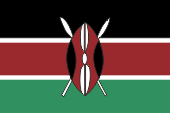 |
|
| In der Praxis werden diese Farben nicht verwendet, noch nicht mal in Kenia selbst. Die Flaggendarstellungen auf dieser Seite orientieren sich fablich an den Farben der Flagge, die auf der Webseite des UNO-Botschafters von Kenia verwendet worden sind und an den Farbvorgaben des britischen Flaggensystems, die in Kenia teilweise gelten, da man das britische Ensign-System übernomen hat. So wäre das Luftwaffenblau als Pantone 549 anzunehmen. |
In practice, these
colours are not used, not even in Kenya itself. The flag images on this page are based on the colours of the flag used on the website of the UN Ambassador of Kenya and on the colour specifications of the British flag system, which are partly used in Kenya because the British Ensign system has been adopted. Thus, the air force blue would be assumed to be Pantone 549. |
| Quelle/Source: Die Welt der Flaggen, Flaggen Wappen Hymnen, Flaggen-Atlas Erde, Wikipedia (EN), Flags of the World, UNO | |
Wappen – Coat of Arms: |
|
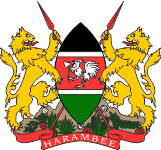 |
Wappen von Kenia – coat of arms of Kenya, Quelle/Source: Corel Draw 4 |
Bedeutung/Ursprung des Wappens – Meaning/Origin of the Coat of Arms: |
|
| Das Staatswappen zeigt auf dem in den Landesfarben gestalteten Massai-Schild einen beilschwingenden silbernen Hahn (Parteiabzeichen der KANU). Als Sockel dient der Kenia-Berg, auf dem wichtige Agrarprodukte des Landes gezeigt werden. Schildhalter sind zwei speerhaltende Löwen, die an das Kolonialemblem von Kenia, einen springenden Löwen, erinnern. Auf dem Schriftband findet sich das Staatsmotto in Suaheli, "Harambee". Das heißt "zusammen". | The coat
of arms of the state shows on the in the colours of the country styled
Massai shield an axe-swinging silvery rooster (Party-emblem of the KANU).
The pedestal is Mount Kenya, on which are placed important products of the agriculture of the land. Supporters are two spear-holding lions, remembering the colonial-emblem (badge) of Kenya, a jumping lion. On the banner is placed the state-motto in Swahili, "Harambee". That means "together". |
| Quelle/Source: Die Welt der Flaggen | |
Flugzeugkokarde – aircraft roundel: |
|
 |
Flugzeugkokarde – aircraft roundel Quelle/Source: nach/by Wikipedia (EN) |
Landkarten – Maps: |
Lage – Position: |
Landkarte des Landes – Map of the Country: |
Zahlen und Fakten – Numbers and Facts: |
|
|
|
|
|
|
|
|
|
|
|
|
|
|
|
|
|
|
|
| ca. 700 ·
Araber errichten Handelsstützpunkte an der Küste 1498 · der Portugiese Vasco da Gama entdeckt die Küste Ostafrikas und landet in der Stadt Malindi 1505 · die Portugiesen erobern mehrere Küstenstädte und errichten in der Folgezeit Handelsstützpunkte ein 1696 · die Araber vertreiben die Portugiesen 1728 · die Portugiesen erobern erneut mehrere Küstenstädte 1730 · die Araber vertreiben die Portugiesen wieder 1837 · der Sultan von Sansibar unterwirft die Küste Ostafrikas 1885 · das Deutsche Reich erklärt das Sultanat Witu zum deutschen Protektorat 1887 · der Sultan von Sansibar überträgt die Verwaltung der Küste an die Imperial British East Africa Cooperation, Großbritannien beginnt mit der Kolonisierung 1890 · wegen des Helgoland-Sansibar-Vertrags muss das Deutsche Reich die Kolonie Deutsch-Witu räumen 1895 · Gründung des Protektorats Britisch-Ostafrika 01.04.1905 · Uganda wird aus Britisch-Ostafrika herausgelöst und wird eigenständige Kolonie 1920 · das Hinterland Britisch-Ostafrikas wird britische Kronkolonie – der Name Kenia wird erstmals für das Gebiet verwendet, er leitet sich vom Berg Kenia her 1902–1918 · Besiedlung durch Europäer 1948 · die East African High Commision übernimmt in wesentlichen Teilen die Verwaltung von Britisch-Ostafrika 1951–1955 · Mau-Mau-Aufstände 1960 · Gründung der KANU-Partei 18.05.1963 · Wahlen, Sieg der KANU Juni 1963 · Gewährung innerer Selbstverwaltung für Britisch-Ostafrika 12.12.1963 · Unabhängigkeit im Rahmen des Commonwealth of Nations unter dem Premier Mzee Jomo Kenyatta 12.12.1964 · Kenia wird Republik, verbleibt jedoch im Commonwealth of Nations, Kenyatta wird Staatspräsident 1969 · die Oppositionsparteien werden verboten 1978 · Moi wird Nachfolger des verstorbenen Kenyatta 1982 · Kenia wird Einparteienstaat 1992 · Wahlen im Mehrparteiensystem 2001 · Kenia, Tansania und Uganda beschließen die Neugründung der im Jahre 1977 aufgelösten East African Community (EAC) |
| ca. 700 ·
Arabs establish trade bases at the coast 1498 · the Portugese Vasco da Gama discovers the coast of Eastern Africa and embarks in the city Malindi 1505 · the Portugese conquer several coastal cities and establish trade bases in the afteryears 1696 · the Arabs banish the Portugese 1728 · the Portugese conquer several coastal cities again 1730 · the Arabs banish the Portugese once more 1837 · the Sultan of Zansibar subjects the coast of East Africa 1885 · the German Empire declares the Sultanate of Witu to a German protectorate 1887 · the Sultan of Zansibar hands the administration of the coast to the Imperial British East Africa Cooperation, United Kingdom begins with the colonization 1890 · because of the Heligoland Zansibar Treaty the German Empire has to leave the colony of German Witu 1895 · establishment of the Protectorate of British East Africa 1st of April 1905 · Uganda gets separated from British East Africa and becomes an individual colony 1920 · the hinterland of British East Africa becomes a British crown colony – the name Kenya gets used for the first time for the region, it derives from the Mount Kenya 1902–1918 · settlement by Europeans 1948 · the East African High Commision takes over – in essential parts – the administration of British East Africa 1951–1955 · Mau-Mau riotings 1960 · foundation of the KANU party 18th of may 1963 · elections, victory for the KANU June 1963 · granting of internal self administration for British East Africa 12th of december 1963 · independence in the framework of the Commonwealth of Nations under the Premier Mzee Jomo Kenyatta 12th of december 1964 · Kenya becomes republic, but remains im the Commonwealth of Nations, Kenyatta becomes President 1969 · the opposition parties get banned 1978 · Moi becomes successor of the deceased Kenyatta 1982 · Kenya becomes one-party-state 1992 · elections within a multi-party-system 2001 · Kenya, Tanzania and Uganda agree upon the re-foundation of the in the year 1977 dissolved East African Community (EAC) |
| Quelle/Source: Atlas zur Geschichte, Wikipedia (D), Discovery '97 |
Ursprung des Landesnamens – Origin of the Country's Name: |
|
| Das Land hat seinen Namen vom Mount Kenya her, der 5199 m hoch ist. Der Berg wurde 1849 von seinem Entdecker, Dr. Johann Ludwig Krapf so benannt, weil er wahrscheinlich den Namen der Einheimischen für den Berg "Kirinyaga" (leuchtender Berg) falsch verstanden hat. | The
country has its name from Mount Kenya, which is 5199 meters high. The mountain was so named by its discoverer, Dr. Johann Ludwig Krapf, in 1849, because he probably misunderstood the name of the locals for the mountain "Kirinyaga" (shining mountain). |
| Quelle/Source: Wikipedia (DE) | |